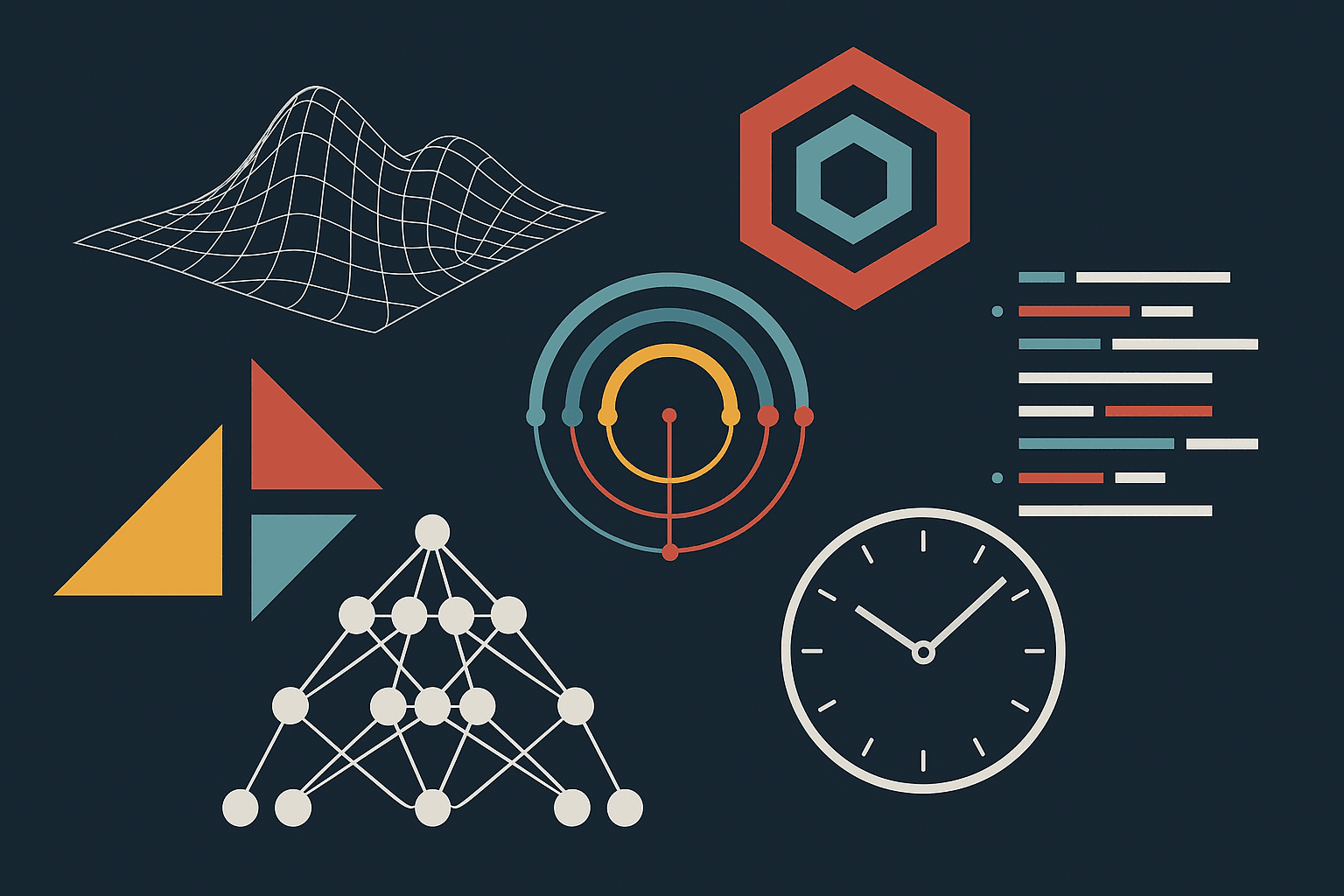
What are the different demand forecasting techniques?
Introduction
Demand forecasting is the process of predicting future sales by using historical data to make informed business decisions about everything from inventory planning, and warehousing needs to running promotions and meeting customer expectations. Demand forecasting helps the business estimate the total sales and revenue for a future period of time. The predictions depend upon the past sales pattern and the continuing trend and user behavior in the present. Historical sales data plays a crucial role in identifying these patterns and trends, making it an essential component of the demand forecasting process. Subsequently, it is not just simply estimating the future demands but combining several techniques for estimating the demand scientifically and objectively. Before we continue to various techniques to forecast demand, it is necessary to know about the types of forecasts an organization performs.
Definition of Demand Forecasting
Demand forecasting is the process of predicting future customer demand for a product or service over a specific period. It involves analyzing historical data, market trends, and other relevant factors to estimate the quantity of goods or services that customers will likely purchase in the future. Accurate demand forecasting helps companies optimize their resources, reduce excess inventory, prevent stockouts, and better align their supply with customer demand. By understanding and anticipating customer demand, businesses can make informed decisions that enhance their overall efficiency and profitability.

Types of forecasting using historical sales data
There are several demand forecasting techniques, based on techniques, your forecast may differ. Demand Forecasting can majorly classified based on the level of detailing, the time period considered and the scope of the market considered. Most organizations do multiple demand forecasts to get a better picture out of it. Utilizing various methods of demand forecasting, such as trend projection and market research, can provide a comprehensive view of future sales.
- Active Demand Forecasting: An Active demand forecasting model takes into consideration market campaigns, market analysis, and research and market expansion plans. This type of forecasting is done for scaling and diversifying business with aggressive growth plans such as startups. As startups have less historical data so they have to make estimations based on external data.
- Passive Demand Forecasting: Passive demand forecasting is the simplest way to make predictions using historical data. This type of forecasting is mainly used by well-established organizations with an ample amount of historical data and market experience.
- Short Term Demand Forecasting: Short-term demand forecasting will make predictions for the next three to twelve months of time period. It is used to act quickly to changes in customer demand and market behavior. In this type of forecasting, real-time sales data is used to manage just in time inventory.
- Long Term Demand Forecasting: Data security is non-negotiable in today’s world. Snowflake takes this seriously, offering robust security features to protect your precious data. From encryption to access controls, your data is in safe hands.
- External Macro Forecasting: External macro forecasting helps to overlook trends in the broader economy. This projection looks at how those trends will affect your goals. An external macro demand forecast also can offer you direction for a way to satisfy those goals.
- Internal Business Forecasting: Internal Business Forecasting deals with internal business operations such as business financing, supply-chain management, cash on hand, and personnel. It basically points towards the areas where the organizations need to increase the capacity in order to meet the expansion goals.
Based on the type of forecasting, required by an organization, various forecasting techniques can be used, which we will discuss in the next segment of the blog.
Qualitative vs. Quantitative Methods
When it comes to demand forecasting, businesses can choose between qualitative and quantitative methods, each with its unique advantages. Qualitative methods rely on expert opinions, market research, and sales force estimates to forecast demand. These methods are particularly useful when historical data is limited or unavailable, providing valuable insights based on experience and intuition.
On the other hand, quantitative methods use statistical models to forecast demand. Techniques such as time series analysis, causal models, and moving averages analyze historical data to predict future trends. These methods are ideal when reliable historical data is available, offering a data-driven approach to forecasting demand. By combining both qualitative and quantitative methods, businesses can achieve a more comprehensive and accurate demand forecast.
Techniques for accurate demand forecasting
There are two methods in which demand forecasting can be done i.e (A) Survey Methods and (B) Statistical Methods. These demand forecasting methods include techniques such as trend projection, market research, and the Delphi method, each offering unique advantages for accurate predictions.
- Advanced Analytics:
- Passive Demand Forecasting: Passive demand forecasting is the simplest way to make predictions using historical data. This type of forecasting is mainly used by well-established organizations with an ample amount of historical data and market experience.
- Short Term Demand Forecasting 2: Short-term demand forecasting will make predictions for the next three to twelve months of time period. It is used to act quickly to changes in customer demand and market behavior. In this type of forecasting, real-time sales data is used to manage just in time inventory.
- Long Term Demand Forecasting: Data security is non-negotiable in today’s world. Snowflake takes this seriously, offering robust security features to protect your precious data. From encryption to access controls, your data is in safe hands.
- External Macro Forecasting: External macro forecasting helps to overlook trends in the broader economy. This projection looks at how those trends will affect your goals. An external macro demand forecast also can offer you direction for a way to satisfy those goals.
- Internal Business Forecasting: Internal Business Forecasting deals with internal business operations such as business financing, supply-chain management, cash on hand, and personnel. It basically points towards the areas where the organizations need to increase the capacity in order to meet the expansion goals.
- Advanced Analytics:
- Market Research In the market research technique, consumer-specific survey forms are sent out in tabular format to get insights that an organization can’t get from internal sales. It gives better information about the type of customers and demographic data which will help to target future markets. Market Research helps young companies to know their customer base better.
- Sale Force Opinion SalesForce Opinion method use data from sales groups to forecast demand. Salespeople of an organization are closest to their customer base, hence can generate valuable information on customer needs, behavior, and feedback and can even give information about the competition in the markets.
- Delphi Method In Delphi Method, an organization hires a group of external experts. Each Expert generates a forecast based on their market knowledge. After this process forecasts are shared among the experts anonymously, hence experts get influenced by each other’s forecasts. Now the experts are asked again to generate a forecast and this process is repeated until all experts reach a near consensus scenario. The process is intended to permit the experts to expand on one another’s information and assessments.
- Statistical Methods:
- Trend Projection This is the simplest and most common demand forecasting technique which is used by organizations. Trend Projection uses past sales data to project future sales. This technique can be used by organizations with a sufficient amount of past sales data(typically more than 18 to 24 months). The data is arranged in chronological order to form a time series, time series depicts the past trends based on which future market trends can be predicted.
- Barometric Forecasting Technique
In Barometric Technique, demand is forecasted based on the basis of past events or the events occurring in the present. It is done by analyzing statistical and economic indicators such as saving, investment, and income. This method can be implemented even in the absence of past data. For example, suppose the government plans for a large housing project, this indicates that there would be high demand for construction materials in the future.
- Econometric Forecasting Technique
This technique combines past sales data with the factors that influence the demand to create a mathematical formula to predict future demand. It finds the relation between the dependent variable and the independent variables. If only one factor affects the demand it is known as a single variable demand function or simple regression. Whereas if there are multiple factors affecting the demand, it is known as multiple variable demand function or multiple regression.
- Regression Equation : Y = a + bX , Y is the forecasted demand.
Demand forecasting** helps organizations to make smart business decisions. Based on the business requirements, sales data, market research, and economic factors different demand forecasting techniques can be used. It is often an iterative, highly detailed, and expertise-driven process.**
Advanced Demand Forecasting Techniques
In today’s data-driven world, advanced demand forecasting techniques are revolutionizing how businesses predict future demand. Machine learning and AI-based forecasting techniques can analyze vast amounts of data, identify patterns, and make highly accurate predictions. These advanced methods include:
- Machine Learning Algorithms: Techniques such as regression and decision trees can uncover complex relationships within data, providing precise demand forecasts.
- Artificial Intelligence (AI) and Deep Learning: These technologies can process and learn from large datasets, continuously improving forecast accuracy.
- Natural Language Processing (NLP) and Text Analysis: By analyzing textual data, such as customer reviews and social media posts, businesses can gain insights into customer sentiment and emerging trends.
- Predictive Analytics and Data Mining: These methods involve extracting valuable information from data to predict future demand patterns.
By leveraging these advanced techniques, businesses can significantly enhance their forecast accuracy, leading to better decision-making and improved supply chain operations.
Factors Affecting Demand Forecasting
Several factors can influence the accuracy and reliability of demand forecasting. Understanding these factors is crucial for making precise predictions. Key factors include:
- External Events: Changes in market trends, economic indicators, and customer behavior can significantly impact demand forecasts.
- Internal Factors: Variations in production capacity, inventory levels, and supply chain management practices can affect demand predictions.
- Seasonality and Cyclicality: Demand often fluctuates based on seasonal patterns and economic cycles.
- Competitor Activities: Actions taken by competitors, such as new product launches or pricing strategies, can influence customer demand.
- Consumer Behavior and Preferences: Shifts in consumer preferences and buying habits can alter demand patterns.
- Economic Changes: Economic conditions, such as recessions or booms, can have a profound impact on demand forecasting.
By considering these factors, businesses can improve the accuracy of their demand forecasts and better align their strategies with market realities.
Best Practices for Effective Demand Forecasting
To achieve effective demand forecasting, businesses should adopt several best practices:
- Scenario Planning: Anticipate different market conditions and prepare for various scenarios to enhance forecast accuracy.
- Data-Driven Decision-Making: Use data and analytics to inform forecasting decisions, ensuring they are based on solid evidence.
- Process Standardization: Implement standardized processes to ensure consistency and accuracy in demand forecasting.
- Collaboration and Communication: Foster collaboration across departments and teams to gather diverse insights and improve forecast reliability.
- Continuous Monitoring and Evaluation: Regularly assess forecast accuracy and make necessary adjustments to improve future predictions.
- Advanced Techniques: Utilize advanced demand forecasting techniques, such as machine learning and AI, to enhance forecast accuracy.
By following these best practices, businesses can achieve more accurate demand forecasts, leading to better inventory management, optimized supply chain operations, and improved overall performance.

About Pronam Chatterjee
A visionary with 25 years of technical leadership under his belt, Pronam isn’t just ahead of the curve; he’s redefining it. His expertise extends beyond the technical, making him a sought-after speaker and published thought leader.
Whether strategizing the next technology and data innovation or his next chess move, Pronam thrives on pushing boundaries. He is a father of two loving daughters and a Golden Retriever.
With a blend of brilliance, vision, and genuine connection, Pronam is more than a leader; he’s an architect of the future, building something extraordinary
Related Posts
View all postsTF-IDF helps identify words that are more significant in a given document compared to the entire document corpus.
Both NodeJS and AngularJS are widely used and open source JavaScript-based technologies. AngularJS is a JavaScript framework, whereas NodeJS is a cross-platform runtime environment.
By utilizing a demand forecast, businesses can analyze past trends and patterns to anticipate future demand, optimize production planning, and make strategic decisions.
Nested Learning treats models as several coupled optimization problems that run at different speeds (“levels”).
Most modern data stacks are expensive, cloud-hosted legacy systems. BluePi sees Airflow DAGs become spaghetti, BigQuery treated as infinite, and teams drowning in YAML instead of delivering insights.




